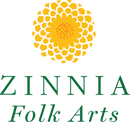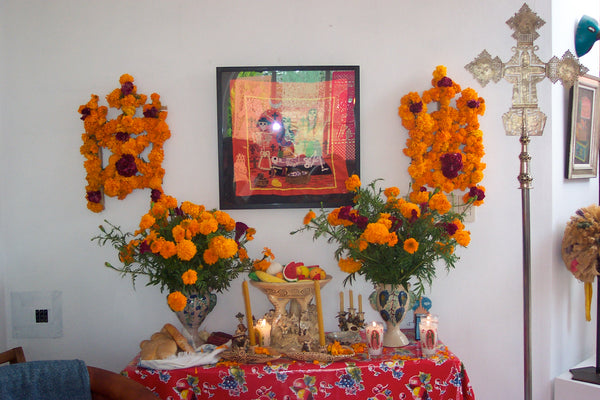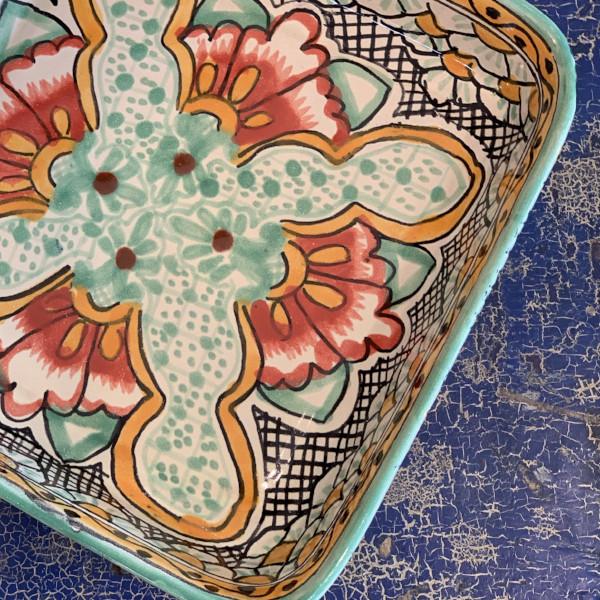Many people are not familiar with one of the most important holidays in Mexico, Day of the Dead, also known as Muertos or Día de Muertos. Books have been written about the history, meaning, practices and beliefs of this beautiful holiday, but in a super small nutshell, Day of the Dead is a time to remember and honor family and friends who have passed away. The traditions vary by region in Mexico--Oaxaca is different than Michoacán, and urban traditions are different than rural--but one way for Americans to think of it, is that it is a little like a combination of Thanksgiving (traditional foods, family gatherings, iconic colors, traditional flowers & smells) and Memorial Day (going to the cemetery, cleaning and decorating the grave site, remembering the dead).
It is not a version of Halloween. Both holidays share the timing of All Saints Day and they both feature skeletons, but that is where the similarity ends. Americans may get a little confused because there are so many skeletons or skulls around during Muertos but these skeletons are happy and doing things that they used to do in life--playing instruments, singing, teaching classes, riding bikes--anything that they would do in life, they do in death. And always with a smile on their face. In Mexico, Day of the Dead is on November 1 and 2.
The first day, November 1, is generally a time to remember children who've died and November 2 is for adults. The streets of rural towns and the markets fill with the marigolds, baby's breath and celosia during the week before November 1. There are pan de muertos, sugar skulls and candles to be purchased for building the home ofrenda or shrine. Grave sites are cleaned and repaired and made ready for the community vigils and gatherings that occur overnight in the cemetery. The thinking is that the smells of traditional marigold-like flowers, of favorite foods and favorite belongings will entice the dead to come home for a short visit and reunite with the family members and friends who love them. It is a beautiful and somber time, not morbid, not frightening. It's a time to remember people who are important to us who are no longer in this world.
It is not a version of Halloween. Both holidays share the timing of All Saints Day and they both feature skeletons, but that is where the similarity ends. Americans may get a little confused because there are so many skeletons or skulls around during Muertos but these skeletons are happy and doing things that they used to do in life--playing instruments, singing, teaching classes, riding bikes--anything that they would do in life, they do in death. And always with a smile on their face. In Mexico, Day of the Dead is on November 1 and 2.
The first day, November 1, is generally a time to remember children who've died and November 2 is for adults. The streets of rural towns and the markets fill with the marigolds, baby's breath and celosia during the week before November 1. There are pan de muertos, sugar skulls and candles to be purchased for building the home ofrenda or shrine. Grave sites are cleaned and repaired and made ready for the community vigils and gatherings that occur overnight in the cemetery. The thinking is that the smells of traditional marigold-like flowers, of favorite foods and favorite belongings will entice the dead to come home for a short visit and reunite with the family members and friends who love them. It is a beautiful and somber time, not morbid, not frightening. It's a time to remember people who are important to us who are no longer in this world.
The folk art, made for the period of Muertos, is generally skeletons who are doing things that they did during life (dancing, playing music, eating, working, riding bikes and many other activities) or skulls that are not frightening. Skulls are made of many different materials including sugar, paper mache, clay, wood. Papel picado has the images of skeletons and skulls. The paper flowers are usually orange and maroon, the traditional colors of the holiday. Some people buy only a sugar skull to decorate their ofrenda and others have huge Day of the Dead collections.
Take a look at our Day of the Dead collection and please ask questions if you have any!


